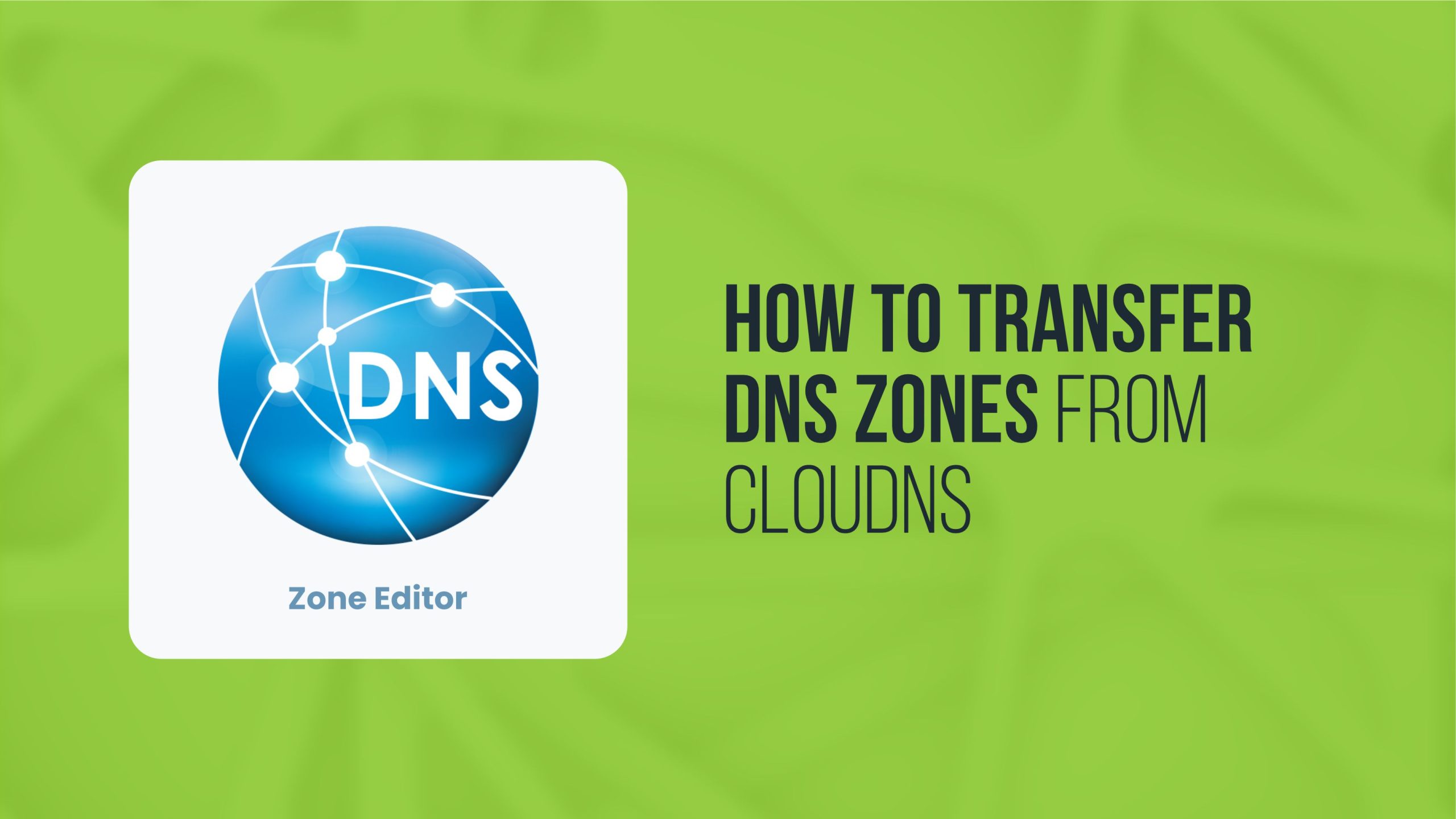
When managing your domains, you may need to transfer DNS zones from one DNS provider to another. This process is necessary if you are migrating domains to a new hosting provider or if you need a more robust DNS management solution. ClouDNS is a popular DNS hosting provider known for its wide range of DNS services, including zone management. Transferring DNS zones from ClouDNS to another provider can be done relatively easily with proper planning and execution.
In this guide, we will cover:
– What is a DNS zone?
– Why transfer DNS zones from ClouDNS?
– Step-by-step guide to exporting and transferring DNS zones from ClouDNS
– Best practices after the transfer
What is a DNS Zone?
A DNS zone refers to a distinct part of the Domain Name System (DNS) that contains information about a particular domain name and its subdomains. The DNS zone file includes DNS records (like A, CNAME, MX, NS, and TXT) that define how domain names are resolved into IP addresses, mail server details, and more.
Transferring DNS zones involves copying these records from one DNS provider (ClouDNS) to another, ensuring that your domain continues to function correctly on the new DNS platform.
Why Transfer DNS Zones from ClouDNS?
There are several reasons you might need to transfer DNS zones from ClouDNS to another DNS provider:
– Changing Hosting Providers: You may be migrating your website or applications to another hosting service that requires DNS configuration at the new provider.
– Enhanced Performance: Some DNS providers offer better performance, faster resolution times, or more advanced features.
– Consolidation of Services: If you a re using multiple DNS services and want to consolidate all domain management under one provider.
– Cost Efficiency: Your new DNS provider may offer lower costs or better pricing for large-scale operations.
Step-by-Step Guide to Exporting and Transferring DNS Zones from ClouDNS
Step 1: Access ClouDNS Dashboard
To begin the DNS zone transfer, you need to log in to your ClouDNS account.
1. Navigate to the [ClouDNS](https://www.cloudns.net/) website.
2. Click on Login and enter your account credentials.
3. Once logged in, go to the DNS Zones section where you can see a list of your domains.
Step 2: Export DNS Zones from ClouDNS
1. Navigate to the DNS Zone of Your Domain:
– In your ClouDNS dashboard, locate the domain whose DNS zone you want to transfer.
– Click on the domain to view all the DNS records associated with it.
2. Export DNS Zone:
– In the domain management interface, you should see an option to Export Zone.
– ClouDNS allows you to export the zone file in BIND format, which is a widely accepted format for DNS zone files.
– Click on Export Zone or a similar button, and you will download a `.txt` or `.zone` file containing all DNS records.
Step 3: Prepare the DNS Zone for the New Provider
Before importing the DNS zone to your new provider, review the exported DNS records. You’ll want to ensure that:
– No Obsolete Records: Remove any old or unused DNS records to avoid cluttering the new DNS system.
– Correct IP Addresses: Ensure that the IP addresses, MX records, and other critical records are correct.
– TTL Settings: Verify the TTL (Time to Live) values for your records. Adjust these if needed based on the new provider’s recommendations.
Step 4: Import DNS Zones to the New Provider
Now that you have exported the DNS zone from ClouDNS, you need to import it into your new DNS provider.
1. Log in to Your New DNS Provider:
– Sign in to the DNS provider where you plan to transfer the DNS zone.
2. Locate the Import Zone Option:
– Most DNS providers have an option to import DNS zone files.
– Look for a section in the new provider’s dashboard that allows you to upload or import a zone file. This could be under DNS Settings, Zone Management, or a similar category.
3. Upload the DNS Zone File:
– Upload the `.zone` or `.txt` file you exported from ClouDNS.
– Follow the prompts to complete the import process. The DNS provider will parse the file and automatically set up your DNS records based on the information provided.
4. Verify the Records:
– Once imported, review the DNS records in the new provider’s dashboard to make sure everything has transferred correctly.
– Compare the new provider’s zone records with those in ClouDNS to ensure no important data was lost or incorrectly imported.
Step 5: Update Domain Name Servers (NS Records)
Once the DNS zone transfer is complete, you need to point your domain’s Name Servers (NS records) to the new DNS provider. This will tell the internet that your domain’s DNS is now managed by the new provider.
1. Get the New Name Servers:
– Get the name server details (NS records) from your new DNS provider. These are usually provided in the account dashboard or setup instructions.
2. Update the NS Records at Your Domain Registrar:
– Log in to your domain registrar (e.g., GoDaddy, Namecheap, or wherever you purchased the domain).
– Locate the DNS Settings or Nameserver Settings for your domain.
– Replace the old ClouDNS name servers with the new name servers from your new DNS provider.
– Save the changes.
3. Wait for DNS Propagation:
– DNS propagation can take anywhere from a few minutes to 48 hours, depending on your TTL settings and your domain registrar.
– Use a DNS propagation checker (e.g., [whatsmydns.net](https://www.whatsmydns.net/)) to monitor the progress.
Best Practices After DNS Transfer
1. Monitor DNS Propagation
After changing the name servers, it is important to monitor DNS propagation to ensure that users are being directed to the new server correctly. You can use free tools like WhatsMyDNS to verify that the changes are propagating globally.
2. Keep the ClouDNS Account Active for a While
Don’t delete your ClouDNS account immediately after the transfer. Keep it active for at least a few days to ensure there are no missed records or issues during the migration.
3. Test Website Functionality
Once the DNS records have fully propagated, visit your website and test all functionalities (e.g., web pages, email, and other services). Ensure that everything works as expected after the migration.
4. Notify Users and Clients
If the domain is used for a public website or services, consider notifying users or clients that the transfer has been successfully completed. Inform them that there may be minor delays during the DNS propagation period.
Transferring DNS zones from ClouDNS is a straightforward process that involves exporting the DNS zone file, importing it into your new provider, and updating your domain’s name servers. With careful planning and attention to detail, you can ensure a smooth transition without downtime or loss of functionality. Always remember to monitor DNS propagation and test your services after the transfer to verify that everything works as expected.
